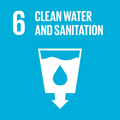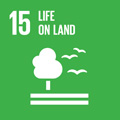- Docente: Alessio Domeneghetti
- Credits: 6
- SSD: ICAR/02
- Language: Italian
- Teaching Mode: Traditional lectures
- Campus: Bologna
- Corso: Second cycle degree programme (LM) in Environmental Engineering (cod. 8894)
-
from Feb 18, 2025 to Jun 05, 2025
Learning outcomes
The course aims at illustrating methods and tools for (a) selecting and applying innovative solutions for monitoring river systems and their ecosystem services, and (b) implementing computer-aided planning and design of river training, management and restoration.
Course contents
In order to pursue an optimal learning process, students are warmly invited to take the course METODI E MODELLI PER L'IDROLOGIA M - 6 cfu during the first year, 2nd cycle of the Master Degree Program.
The course aims to provide the student with an overview of the national and international regulatory framework relating to the management of watercourses, the technical notions for the identification and design of river accommodation and management interventions, as well as the basic knowledge of commonly used numerical model (e.g. HEC-RAS). In brief, the course program deals with the following main topics: national and international regulatory framework (EU directives, national standards, etc.); criteria for the hydro-morphological evaluation, analysis and monitoring of water courses; characterization of the erosive dynamics and main interventions for the protection of the watercourse and interfering structures; integrated interventions for the river restoration: flood risk mitigation, ecological status improvement, also with the use of nature-based solutions. The course includes an extensive practical activity aimed at applying hydraulic models (HEC-RAS) at different resolution (1D and 2D).
Readings/Bibliography
The material (notes, slides, scientific articles, etc.) presented in class is available online (vituale.unibo.it), together with the registration of the lessons.
Main texts for further information:
- Da Deppo, Datei e Salandin, Sistemazione dei corsi d’acqua, Edizioni Progetto Padova
- Becciu, Paoletti, Fondamenti di costruzioni idrauliche, UTET, Torino
- Loucks and van Beek, Water Resources Systems Planning and Management: An Introduction to Methods, Models and Applications (http://ecommons.cornell.edu/handle/1813/2798 )
- Radecki-Pawlik, Pagliara & Hradecky, Open channel hydraulics, river hydraulic structures and fluvial geomorphology, CRC Press, Taylor and Francis Group.
- P. Singh, Handbook of applied hydrology (second edition), McGraw Hill education
Teaching methods
Theoretical and practical lessons (in presence) with exercises to be carried out on the computer under teacher supervision. In consideration of the type of activity and the teaching methods adopted, the attendance of this training activity requires the prior participation of all students in the training modules 1 and 2 on safety in the study places, in e-learning mode.
Assessment methods
Achievements will be assessed by means of an oral examination. This is based on an analytical assessment of the "expected learning outcomes" described above. The exam consists on oral assessment where the student defends and discusses her/his report of the in-class and home assignments.
To pass the exam, the students are required to master the main theoretical principles and methodologies taught during the lectures. The laude is awarded to students who, in addition to master all the covered topics and to present top-grade assignments, show to have integrated their knowledge with personal in-depth analysis.
Teaching tools
Handouts on the topics covered in the course, lecture slides, assignments and exercises and their draft solutions are published in the web (virtuale.unibo.it ). Practical activities will be carried out referring to freeware/open source software (e.g. HEC-RAS, Q-GIS).
Office hours
See the website of Alessio Domeneghetti
SDGs



This teaching activity contributes to the achievement of the Sustainable Development Goals of the UN 2030 Agenda.
